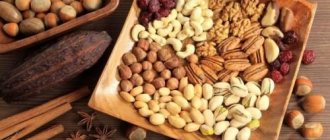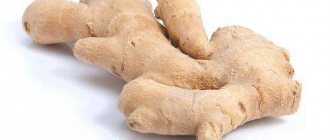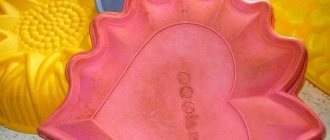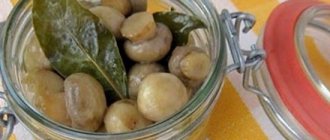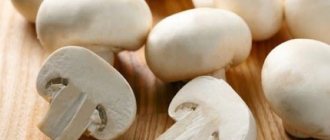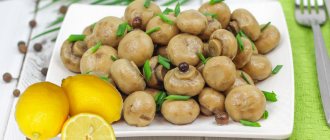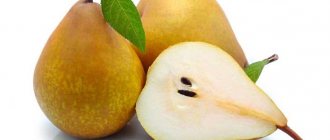Is it possible to determine the origin, quality and freshness of mushrooms when purchasing them?
When purchasing a product in a store or on the market, a potential buyer should pay attention to a number of important nuances:
- The presence of a film between the stem and the cap. In fresh champignon it is white, elastic, dense.
- Dryness of the cap. The mushroom should be dry and smooth to the touch. If it sticks even a little, it is not recommended to make a purchase.
- Small spots. The champignon should be white or with a slight shade of beige-gray. The fresh fruit does not have any wormholes, holes or spots.
If a mushroom does not meet any of the listed characteristics, this does not mean that it is spoiled, but its shelf life is coming to an end. This means that it should be consumed on the day of purchase; there is no point in storing it further. The origin of mushrooms is very easy to determine. Even if they are sold not in a store, but at the market, most likely they were grown in greenhouse conditions. Forest or meadow ones are extremely rare; visually they are completely different.
There are other subspecies of champignons, which also differ from the usual ones. For example, August, garden, dark red and others.
Right choice
In addition to proper preparation, it is also important to purchase a quality product. When choosing mushrooms in a store, you need to take into account several main aspects of the freshness of the product.
- The first important rule is that you should not buy a product at the market, as it is difficult to track freshness and quality there.
- A fresh product has a white or slightly creamy tint, without unnecessary darkening; the presence of the latter indicates long-term storage.
- The smell should be pleasant mushroom, without a hint of dampness or mustiness.
- A quality product is elastic and has the lightest cut.
Is it necessary to clean champignons before cooking?
It is not safe to immediately cook newly purchased mushrooms. Their fruiting bodies should at least be wiped with a damp cloth.
It is necessary to clean, and I believe that you also need to wash... Store-bought mushrooms are grown not just on the ground, but on a well-fertilized substrate, and believe me, there are enough nitrates there.
Even though the mushrooms were grown under artificial conditions, the substrate is not sterile. Therefore, it is also safer to rinse the mushrooms under running water. Young small specimens do not need any other treatment.
Wild mushrooms cannot be called pure. Remains of soil are removed from the fruiting bodies with a brush, rinsed and the lower part of the stems is cut off. Since the skin of young mushrooms is tender and thin, it makes no sense to remove it.
Why peel and wash champignons?
Regardless of where the mushroom was found - in the forest or on store shelves, it must be washed under running water. Why? In addition to natural debris, forest “residents” can also contain insects and pests. Mushrooms grown under artificial conditions differ from their natural counterparts in the cleanliness of their caps and stems, but they also grow in a substrate that is far from sterile. Various microscopic organisms can live on them. Don't forget about dust, it is everywhere. In addition, while the champignons make their way from the garden to the shelves, they will pass through numerous hands of workers.
It is enough to rinse young store-bought specimens well under water. It is not enough to wash mushrooms collected in the forest; they must be additionally cleaned of soil, insects and other debris and the top layer, which may contain harmful, toxic substances, is removed. The fungus absorbs them from the environment.
Mushroom Picker Rules
In addition to how to process champignons before cooking after picking, every mushroom picker should know that under no circumstances should they be collected in household landfills or along roads. You shouldn't risk your health.
You should also not collect old mushrooms; champignons have the ability to absorb waste and toxic substances and accumulate harmful elements.
Their main difference from the false representative is that the flesh of the inedible mushroom turns red when broken and has an unpleasant odor.
Be very careful when picking mushrooms yourself.
How to properly wash mushrooms and whether they need to be pre-soaked in water
Champignons contain a sufficient amount of moisture, but despite this, they are able to quickly absorb it, which significantly reduces the shelf life and deteriorates the quality of the finished product. That is why you should not rinse mushrooms with water for a long time, much less soak them.
It must be remembered that the younger the champignon, the longer it can be subjected to “water” procedures without worrying about losing its taste.
After rinsing store-bought champignons in water, pat them dry with paper napkins for 15 minutes and then dry them separately on a napkin or towel. This measure will help quickly remove excess liquid from the mushrooms and prevent them from softening.
What about washing or boiling mushrooms?
Do champignons need to be boiled? Most mushrooms cannot be washed and boiled by draining the water several times. But champignons are the opposite. Of course, you can object, because mushrooms are such an unpredictable product, how can you use it if you don’t boil it?
The fact is that champignons absorb water well, and they do it very quickly, which can negatively affect your dish. And from cooking, mushrooms can completely lose their taste, losing their qualities into the mushroom broth.
Of course, it is necessary to wash the champignons, you never know what chemicals may have settled on them, but you should not soak them and boil them.
It’s better to rinse the mushrooms and quickly place them on a dry towel, this way you won’t spoil the taste of the mushrooms and, if possible, remove any contamination.
Important Rules
To properly prepare mushrooms, adhere to the following rules:
- Cleaning mushrooms always begins with sorting them. During which all spoiled specimens are thrown away, as well as mushrooms with areas of rot.
- The legs must be trimmed, regardless of where they were grown. When collected in greenhouses, they are cut off and placed directly in a bucket. As a result, dirt gets inside the leg. When collecting champignons in the forest, experienced mushroom pickers turn them out of the mycelium, so the remains of mycelium and soil remain on the stems. When trimming the stem, follow the rules - the longer the mushroom has been stored, the larger part of the stem is cut off.
- Damaged areas are cut off. The darkened areas on the stem are carefully scraped off with a knife. Only healthy parts of the mushroom are eaten.
Forest mushrooms are quite fragile and pre-treatment can damage their integrity; to increase density, before cleaning, place them in warm water for 20 minutes, then remove them and subject them to the necessary procedure.
Cleaning champignons
To clean the champignons, prepare:
- deep bowl;
- sharp knife with stainless steel blade;
- cutting board;
- dry kitchen wipes;
- damp terry towel (foam sponge);
- flour;
- a small soft brush.
Important! Small darkening on the cap of forest champignons is most often not pollution, but traces of solar exposure. There is no need to further clean them or try to wash them!
Champignons are very easy to clean. This instruction will help you step by step with the necessary procedure:
- Sort out large and small champignons.
- Before you start cleaning, carefully inspect the fruits. As a rule, fresh specimens have a clean and even cut, so there is no need to cut it further.
- Cut the film that connects the stem and cap. At the same time, remove everything that is rotten, including small black spots.
- Using a soft bristle brush and a damp terry towel (or a regular kitchen sponge), gently brush off any stuck-on dirt or soil particles from the surface of the mushrooms.
- If the fruits are small and relatively clean, rubbing them together is easy enough.
- On large fruiting bodies, the skin on the cap will easily peel off; you just need to, barely touching it, pry it from the edge with a knife and pull it up.
- For stale champignons, remove all dried and limp places so that the taste of the dish does not deteriorate.
- Wipe them with a damp sponge or towel.
- If necessary, hold the champignons under running cold water for a few seconds (it is most convenient to use a colander). Pat them dry with a dry cloth or towel.
If the mushrooms are too dirty and the sand is in hard-to-reach places, try cleaning them in the following way:
- Place a liter of cool water in a deep bowl.
- Pour 1 tbsp into a bowl. l. flour, stir the mixture thoroughly.
- Dip the champignons into the flour water and keep them there for 10 minutes. This procedure will help get rid of garbage in the most remote places.
- Place the washed specimens on a kitchen towel and let them dry.
Did you know? It is not necessary to remove the dark skin on the cap, the skirt and the brown plates under the cap: these parts are absolutely safe and edible. Some housewives prefer to get rid of them so as not to spoil the aesthetic appearance of the dish.
The process of cleaning champignons depends on the age of the mushroom and where it grows.
Button
The cap of such mushrooms does not exceed 2 cm in diameter. It is covered with a very thin skin and does not need to be peeled. Preparing young mushrooms will not take much time. It is enough to brush off any remaining soil or substrate and rinse well in running water. Their legs are so small that they are barely visible from under the cap; they are trimmed.
Old or large champignon
These champignons differ from their young counterparts in the size of the cap; it usually exceeds 5 cm in diameter and is covered with dense skin. During heat treatment, it does not soften, so so that it is not felt in the dish, it is first removed. They do this as follows:
- First, brush off any adhered dirt.
- Then use a sharp knife to remove the “skin”, carefully picking up the edge of the cap and pulling it towards its middle.
- Refresh the cut of the leg. If the mushroom has been in the refrigerator for several days, then cut off the entire dried part, since it will be felt in the dish. The cook legs with the roughened “skin” are completely removed.
- Mature mushrooms open up and “skirts” form on their stems. They don't affect the taste in any way, but some people think they look unsightly and remove them.
- The plates under the cap - and the older the mushroom, the more saturated brown they become - can also be cleaned. But remember that they are the ones who give the dish its mushroom aroma and taste.
When to collect?
Champignons are harvested from April-May, when the weather is warm and humid. The meadow variety can be harvested until October. Forest ones most often appear by August; this variety of champignons differs from its counterparts in its light brown color with dark scales.
In the north, in cold areas, champignons germinate by the end of July, most often where the sun's rays fall. They do not last long, until about the middle - end of August.
Preparing champignons before harvesting
Mushrooms are prepared in different ways. It depends on which heat treatment method is chosen.
Frying
There is no need to wash the mushrooms before frying, as they will quickly absorb excess liquid, which will have a bad effect on the taste and “appearance” of the finished dish. Is it necessary to clean champignons before frying and how to do it correctly? In this case, they are cleaned with a brush to remove dirt, wiped with a damp cloth, and darkened and damaged areas are removed. Champignons processed in this way turn out crispy and have a beautiful golden crust.
Cooking
Mushrooms are cleaned of dirt using a grater or brush, the skin is removed (if required), washed well under running water and the cut of the stem is renewed. Also cut off or scrape off any darkened areas.
Baking
Do I need to clean champignons before cooking - baking in the oven? To prepare mushrooms using this method, large caps are most often used, from which all the plates are removed. To do this, wash the champignons in water for a short time, adding 1-2 tablespoons of flour. In this case, it is an abrasive substance that helps mechanically clean the caps.
Freezing
To freeze mushrooms, use only fresh champignons. They need to be cleaned in advance, all darkened parts removed, then rinsed and dried well. After this, the mushrooms can be cut into small cubes or slices, sprinkled with lemon juice and wrapped in cling film. Then the champignons can be sent to the freezer. If you use frozen mushrooms when preparing soup or stewing, you do not need to defrost them so as not to spoil the appearance of the product, which can cause it to darken and lose its structure.
Drying
You should not wash the champignons before drying, as they will darken. In addition, the drying time will increase significantly, which can lead to the appearance of various molds on the surface of the mushrooms. Mushrooms, cleaned of dirt, need to be cut into slices and dried in an oven or electric dryer.
Before cooking dried champignons, they need to be soaked in water, which will help remove dust and dirt from them. That is why for drying you need to take only good, strong mushrooms, without external damage.
Fresh mushrooms
Champignons can be eaten not only after preliminary heat treatment, but also fresh, which is important for real gourmets. If high-quality mushrooms have been collected and then prepared for consumption, they will not cause harm to health.
To do this, the champignons are first thoroughly cleaned, washed, dried and all darkened and damaged parts are cut off. For cleaning, it is recommended to take a knife with a thin, sharp blade so that it is convenient to clean the caps from the inside. You also need to prepare a brush and wet wipes in advance. To destroy pathogenic microorganisms on a fresh product, they are sent to a well-heated oven for a few seconds.
The above methods of cleaning and preparing champignons for further processing allow you to preserve as much as possible all the beneficial properties in the mushrooms, without compromising the taste of the finished product.
With cheese
Instead of processed cheese, you can use ordinary hard cheese. This cheese soup with champignons will be more intense in flavor, but less creamy in taste, and also less in calories. To give the broth a golden hue, you will need to use vegetable frying from carrots and onions. If desired, you can season the finished dish with herbs, fried homemade crackers and garlic.
- Weakness in the legs - causes and treatment. Symptoms of what diseases may include muscle weakness and tremors in the legs
- Chicken fillet in batter - recipes with photos. How to prepare chicken breast batter and fry in a pan
- Difficulty nasal breathing without runny nose
Ingredients:
- champignons – half a kilo;
- cheese – 0.2 kg;
- onion – 1 pc.;
- potatoes – 3 pcs.;
- carrots – 1 pc.;
- butter -45 g.
Cooking method:
- Cut the potatoes into cubes and boil.
- Cut the mushrooms into slices, chop the onion, grate the carrots.
- Fry all the ingredients in oil for 3-5 minutes, then add to the pan with the potatoes.
- Season the broth with salt and pepper. Grate the cheese and add it to the broth five minutes before it’s ready.
- Reduce heat to low.
- Stir with a spoon until the cheese is completely dissolved. Serve after 15 minutes.

